

 One of the joys of travelling to different wine regions is that you actually also get a bit of an insight into the culture, history, tradition and society of the regions or countries your visit.
One of the joys of travelling to different wine regions is that you actually also get a bit of an insight into the culture, history, tradition and society of the regions or countries your visit.
A very striking example of this is the wine regions we have visited recently on our latest tours: Argentina, Chile and South Africa. They are all part of what we – perhaps sloppily – call The New World wine countries. They are also economies that are “developing” economies. From a wine perspective there are many similarities: there are a lot of new initiatives, many exciting winemakers and entrepreneurs. And a lot of good wine. Looking at them as countries though they are strikingly different.
Chile is the richest, if you look at GDP per capita. South Africa is the poorest. Argentina somewhere in between. Both Argentina and South Africa seem to suffer under political regimes that sometimes seem more focused on self-enrichment than on developing the countries. However, it is undeniable that there has been tremendous progress over the last few years in South Africa. In Argentina this seems more doubtful. Chile seems to be much more focused on economic development, a strategy that seems to work. The country seems more prosperous.
The wine production in all three countries is similar, in that much of it is fairly young. Youngest of all is South Africa which shows through in that there are more diverse initiatives and more “wild” entrepreneurs here than in the other countries. In Argentina the wine sector seems to suffer somewhat from the country’s economic woes.
Interesting indeed to think about.
Another subject that I find interesting to think about is why some wine countries are popular and others less so.
Since a few years back we do a lot of wine tours in Italy. The tours we do in Italy are regularly sold-out. It is indeed a wonderful country to travel in, with excellent wine and food. (Do take a look at our Italian destinations if you are interested.) Italian wines sell well in many countries.
Spain, on the other hand, is an equally beautiful country with equally good wine and excellent gastronomy. But still, they seem to be struggling on the international wine scene. Why is that?
A few years back we used to do wine tours in Spain but had difficulties in attracting people so it is now a few years since we did a Spanish wine tour. But we have decided to re-launch Spain as a wine travel destination. The coming autumn we will put a tour to Rioja in Spain on the tour program. What do we need to do to make it popular? Revive Spanish wines?
And I don’t even dare to mention France. Although France is the world’s biggest tourist destination they are also struggling on the international wine market. True, French are not very good at marketing their country and their wines, but still!
At least here we are doing something to change the situation. We have just finished the manuscript for our new book. It will be on France and French wines! To be launched later this spring.
Enjoy this month’s Brief!
Britt & Per
PS: Recommend to your friends to read the Brief!
– – – – – –
What’s on at BKWine Tours
- Douro Valley, Portugal, 14-18 May 2014
- Bordeaux, September 17-21
- Douro Valley in Portugal, October 22-26
For more information please contact us on email or on phone (we’re on French time), or go to our wine travel site on www.bkwinetours.com!
We also make custom designed wine tours – on-demand tours for you and a group of friends, for your company (maybe to scout new winegrowers?), for a special event… We can combine winery visits and wine touring with other activities: gastronomic workshops, visit to an oyster farm, truffles hunting, cheese making, and more. More info on the custom designed and bespoke BKWine wine tours and travel here!
Wine tours in Finnish: We also do wine tours in Finnish. And in German, Norwegian, Spanish…
Do you want the latest news and updates on our wine travel activity? Subscribe here! (Second alternative BKWineTours.com)
From the World of Wine
Organic wines – in Sweden
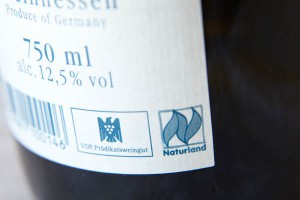 The sales of organic products at the Swedish state alcohol monopoly are targeted to be 10% of total sales by 2020. That is the target set by the Swedish state (i.e. the owner). Organic wine best-sellers today are, not surprisingly, four bag in boxes: Gosa Monastrell from Spain with 1,5 million sold litres (“gosa” is Swedish for “cuddle”), Ecologica Shiraz Malbec from Argentina with 872.595 litres, Tommolo from Italy with 558.165 litres and Las Moras Reserve Chardonnay from Argentina with 485.754 litres. The best-selling bottle is Prosecco Pizzolato with 459.815 litres.
The sales of organic products at the Swedish state alcohol monopoly are targeted to be 10% of total sales by 2020. That is the target set by the Swedish state (i.e. the owner). Organic wine best-sellers today are, not surprisingly, four bag in boxes: Gosa Monastrell from Spain with 1,5 million sold litres (“gosa” is Swedish for “cuddle”), Ecologica Shiraz Malbec from Argentina with 872.595 litres, Tommolo from Italy with 558.165 litres and Las Moras Reserve Chardonnay from Argentina with 485.754 litres. The best-selling bottle is Prosecco Pizzolato with 459.815 litres.
Through training of store staff, the monopoly aim at getting more consumers interested in organic wines. In 2013, 5.4% of total sales at Systembolaget was organic wine.
If you want to know more about what organic wine is you can look out for our forthcoming book on organic, biodynamic and natural wines.
Save the old (unknown?) grape varieties
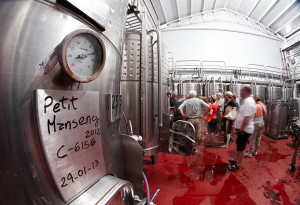 There are several hundred grape varieties that can be used by winemakers in different countries. But the major well known varieties are very dominant. 30 varieties account for about 70% of world wine production. The many lesser known grapes have to be content with sometimes only a few hectares.
There are several hundred grape varieties that can be used by winemakers in different countries. But the major well known varieties are very dominant. 30 varieties account for about 70% of world wine production. The many lesser known grapes have to be content with sometimes only a few hectares.
Is a wine more exciting and interesting if it is made with an unusual grape variety?
The newly founded organization Wine Mosaic thinks so. Wine Mosaic promotes old, traditional and almost forgotten grape varieties grown in the countries around the Mediterranean. These are worth protecting, for the character of the wines, the diversity of the vineyard. Moreover, these grapes are often much more suited to the environment, unlike some “newcomers”.
Read more about Wine Mosaic.
A few good wines we would have liked to have shared with you…
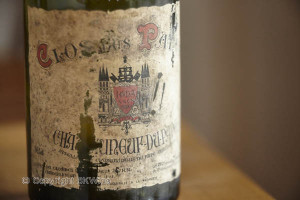 This month, under the heading “Uncorked”, we focus on some gems that we found in the wine cellar. A mixed bag of:
This month, under the heading “Uncorked”, we focus on some gems that we found in the wine cellar. A mixed bag of:
- Bordeaux (Domaine de Chevalier…)
- Penedes (Mas La Plana)
- Chateauneuf-du-Pape
- California (Ridge)
- Côte Rôtie
- Burgundy…
Some inspiration for more wine discoveries! As well as a perspective on what to expect from older wines.
Read more: Uncorked: Good wines we have tasted recently, March 2014.
Copper, less dangerous than we think? Or not?
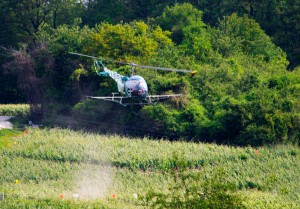 At the end of May, the EU Commission will decide whether to keep the present levels of copper permitted for organic growers or if the levels should be reduced. Currently, organic growers are allowed to use a maximum of six kilograms of copper per year and per hectare. Or more precisely, it is counted as an average over five years, so 30 kg/ha over 5 years. However, the EU would like to see the levels reduced to 4 kilos, i.e. 20 kg/ha over five years.
At the end of May, the EU Commission will decide whether to keep the present levels of copper permitted for organic growers or if the levels should be reduced. Currently, organic growers are allowed to use a maximum of six kilograms of copper per year and per hectare. Or more precisely, it is counted as an average over five years, so 30 kg/ha over 5 years. However, the EU would like to see the levels reduced to 4 kilos, i.e. 20 kg/ha over five years.
ITAB, the French Technical Institute for Organic Farming (Institut technique de l’agriculture biologique), now says in a report that it is impossible for organic growers to reduce treatments to 4 kilos. And maybe not necessary either because the Institute also believes that for the moment it is not possible to say how dangerous copper is for the environment. More research is necessary, they say.
ITAB apparently does not agree with a report published by Efsa, the European Food Safety Authority, that at the end of last year that pointed to a number of environmental hazards with copper spray. Efsa mentions the danger to earthworms, bees, birds and aquatic organisms.
Copper is used to control certain fungal diseases, for instance downy mildew (mildiou). Conventional wine growers use either copper or a synthetic product.
Read more on Mon-viti.com.
Are old vines always better?
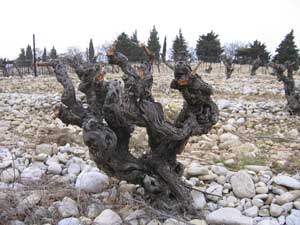 At what age is a vine at its best? When visiting wineries in New World countries you are sometimes surprised. The wine producers there talk about replanting a vineyard after only 20 years. It is considered old. While in France and elsewhere in Europe wine growers speak proudly of their 80-year-old plants and would not consider anything less than 40 years as old.
At what age is a vine at its best? When visiting wineries in New World countries you are sometimes surprised. The wine producers there talk about replanting a vineyard after only 20 years. It is considered old. While in France and elsewhere in Europe wine growers speak proudly of their 80-year-old plants and would not consider anything less than 40 years as old.
Wine-searcher.com speculates why California’s grapevines are short-lived. Could it be due to irrigation, diseases or that the producers have chosen root-stocks that are not suitable for the climate?
But there are old vines in the New World. California has some vineyards with 100 year old zinfandel and in South Africa you can find both chenin blanc and sémillon with very respectable ages. Are old vines always better? Ask a grower in France and another one in California and maybe you will get different answers.
More on wine-searcher.com.
Systembolaget’s Code of Ethical Conduct
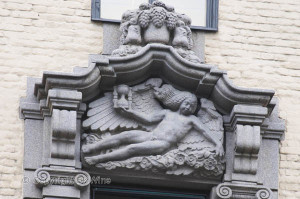 We recently wrote about the Swedish State monopoly Systembolaget’s Code of Conduct for “ethical” wines. We were, however, not totally correct when we said that “Systembolaget […] adopted a few years back a so-called code of conduct. This means that they demand that wines purchased from risk countries come from producers who comply with certain rules regarding conditions for people working in the vineyard.”
We recently wrote about the Swedish State monopoly Systembolaget’s Code of Conduct for “ethical” wines. We were, however, not totally correct when we said that “Systembolaget […] adopted a few years back a so-called code of conduct. This means that they demand that wines purchased from risk countries come from producers who comply with certain rules regarding conditions for people working in the vineyard.”
Helena Paues, deputy press secretary at Systembolaget, called us and pointed out that the Code of Conduct, which is supposed to safeguard the rights of workers, not only applies to risk countries. The Code of Conduct is, since 2012, a part of the purchasing terms of Systembolaget and applies to all suppliers, from all countries.
This is of course true even if the headlights are mostly directed to South Africa and South America. We take for granted that things are as they should be in Europe, Australia, USA …
If you want to know more about different ethical labels and certifications for wine you should look out for our forthcoming book on wine and the environment.
Régnié 2010, Vignes de 1918, Domaine Jean Michel Dupré | Britt’s Wine of the Month
Jean-Michel Dupré calls himself Artisan Vigneron, and by that he probably means that his wines are handcrafted as opposed to made in an industrial way. He has really old vines, which makes a big difference to the character of the wine, he says. This Régnié is made with gamay-vines that were planted in 1918.
This is a really delicious Beaujolais with generous fruit, structure and depth, and yet, easy and elegant in style. A bargain for around 10 euros. jeanmichel-dupre.com
[divider_flat]
Three Italian wine regions, one wine producer: Marchesi Mazzei in Tuscany and in Sicily
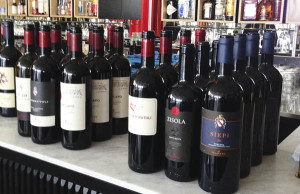 The Italian wine producer Mazzei has vineyards in Chianti, Castelli Fonterutoli, and in the Maremma coastal region, Belguardo. They also have, since some time, back vineyards in Sicily, the Zisola property in the Noto region. The family has a winemaking history that dates back to 1435. Francesco Mazzei was in Stockholm to present their wines.
The Italian wine producer Mazzei has vineyards in Chianti, Castelli Fonterutoli, and in the Maremma coastal region, Belguardo. They also have, since some time, back vineyards in Sicily, the Zisola property in the Noto region. The family has a winemaking history that dates back to 1435. Francesco Mazzei was in Stockholm to present their wines.
BKWine’s Anette Zellen Soderstrom met him at the Museum of Modern Art: The house of Mazzei, an Italian wine producer since 24 generations. [divider_flat]
A tasting of rare malt whiskies from Yamazaki in Japan
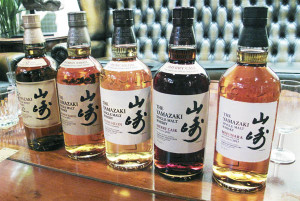 Japan, it’s not just sushi & sake! Japan is actually an important whisky country. In Japan they consume a lot of whisky but it is also a prominent producer of whisky, both of the type called “blends” and malt whisky. One of the most famous producers of Japanese whisky is Suntory. Their series of premium malt whisky is sold under the brand Yamazaki.
Japan, it’s not just sushi & sake! Japan is actually an important whisky country. In Japan they consume a lot of whisky but it is also a prominent producer of whisky, both of the type called “blends” and malt whisky. One of the most famous producers of Japanese whisky is Suntory. Their series of premium malt whisky is sold under the brand Yamazaki.
BKWine’s Roland Ericsson was at the resent presentation of the Yamazaki Cask Collection 2013: A series of very exclusive Japanese malt whisky from Yamazaki. [divider_flat]
Adventures in Italy: travel with BKWine to the Piedmont, with wine, food and truffles, says the Italian Tourist Office
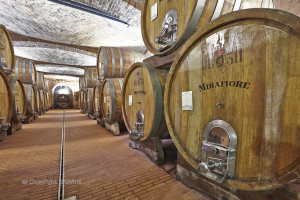 The Italian State Tourist Office has produced a beautiful magazine about various destinations in Italy. The name is “Italian adventures”. One of the trips that they feature in the magazine is BKWine’s wine and food tour to Piedmont, a tour that takes place in the autumn when it is also the season for truffles. But to be quite honest, it can be just as charming to travel in Piedmont, or other regions of Italy, in spring-time too.
The Italian State Tourist Office has produced a beautiful magazine about various destinations in Italy. The name is “Italian adventures”. One of the trips that they feature in the magazine is BKWine’s wine and food tour to Piedmont, a tour that takes place in the autumn when it is also the season for truffles. But to be quite honest, it can be just as charming to travel in Piedmont, or other regions of Italy, in spring-time too.
Read more about this: Italian State Tourist Office features Piedmont with BKWine. [divider_flat]
Bordeaux’ own view of the 2013 vintage, the wine market, China, etc.
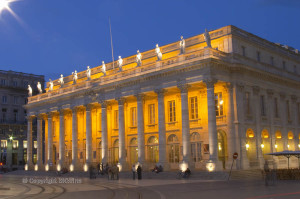 Every year the CIVB (Conseil Interprofessionnel du Vin de Bordeaux, the Bordeaux producers’ joint organization for development, governance, lobbying and political action) arranges a big press conference in Paris, where they talk about what happened during the previous year and their outlook on the future. It is a great opportunity to enjoy a delicious lunch (yes, of course it takes place in a restaurant) and to get a good insight into what is important in the minds of Bordeaux people right now. This year there was a lot of talk about the small 2013vintage, rising bulk wine prices, the comparatively weak sales, a book called Vino Business that has stirred up a bit of a scandal, China, China, and China, and a lot of other things.
Every year the CIVB (Conseil Interprofessionnel du Vin de Bordeaux, the Bordeaux producers’ joint organization for development, governance, lobbying and political action) arranges a big press conference in Paris, where they talk about what happened during the previous year and their outlook on the future. It is a great opportunity to enjoy a delicious lunch (yes, of course it takes place in a restaurant) and to get a good insight into what is important in the minds of Bordeaux people right now. This year there was a lot of talk about the small 2013vintage, rising bulk wine prices, the comparatively weak sales, a book called Vino Business that has stirred up a bit of a scandal, China, China, and China, and a lot of other things.
Read more about this and watch the whole press conference on video: Bordeaux CIVB wine business press conference 2014.
“Austrian wine exactly as we want it”, says AWMB of the 2013 vintage
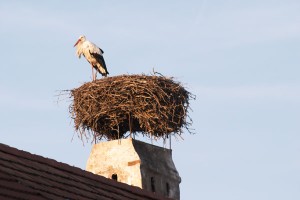 Despite a weather which meant a lot of challenges for the wine growers in 2013 it is a year that promises a lot of good things for Austrian wines. The year started very miserably and the beginning of the summer had, as you may recall, terrible floods. But it was all saved by good weather before and during harvest. It has given many of the white wines a tight and elegant acidity, wines that might benefit from some aging. The reds too look promising, despite some initial doubts. Good concentration and relatively soft tannins. We have not yet had the opportunity to taste any of the wines so the conclusions are from the AWMB.
Despite a weather which meant a lot of challenges for the wine growers in 2013 it is a year that promises a lot of good things for Austrian wines. The year started very miserably and the beginning of the summer had, as you may recall, terrible floods. But it was all saved by good weather before and during harvest. It has given many of the white wines a tight and elegant acidity, wines that might benefit from some aging. The reds too look promising, despite some initial doubts. Good concentration and relatively soft tannins. We have not yet had the opportunity to taste any of the wines so the conclusions are from the AWMB.
Read more: Austrian harvest 2013: good, classic wines in spite of challenging weather.
Bollinger launches the 2002 vintage of their prestige cuvée ”RD” that also celebrates 50 years
 The 2002 vintage of Bollinger RD marks the 50 year anniversary since the very first RD release in 1952. It is a champagne that has been kept 11 years on its lees in the bottle!
The 2002 vintage of Bollinger RD marks the 50 year anniversary since the very first RD release in 1952. It is a champagne that has been kept 11 years on its lees in the bottle!
“RD” means “récemment dégoré” (recently disgorged), in other words, the dead yeast cells have been kept in the bottle until just recently although the champagne is 12 years old.
It was originally created by the famous champagne lady Madame Lilly Bollinger.
BKWine’s reporters Roland Eriksson and Tomas Eriksson was at the launch event and give you two different views of the champagne:
Bollinger RD 2002, with 11 years on the lees. Part 1: a bit of history
Bollinger RD 2002, a champagne special cuvée turns 50. Part 2: more on the wine
Wine events calendar
Send us an email if you have some event you want on the calendar.
Don’t be an egoist! Share with your friends and other wine enthusiasts! Forward the Brief to your friends! Suggest that they sign up for a free subscription !
© Copyright BKWine






